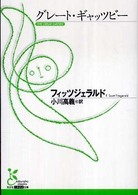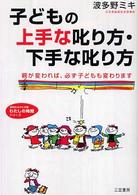- ホーム
- > 洋書
- > 英文書
- > Religion / Ethics
Full Description
The question of why the prophet Elijah comes to hold such enduring significance in early Jewish and Christian tradition has previously remained largely unaddressed. Why is it Elijah, as opposed to any other prophet of the Hebrew tradition, who is associated with Israel's future restoration? Why is his return predicted by the book of Malachi? Why are both Jesus and John the Baptist associated with Elijah in the New Testament Gospels? This study argues that Elijah's literary character is portrayed and received throughout early Jewish and Christian literature as the paradigmatic prophet who simultaneously embodies the righteous people of God, and thereby, by his ongoing life, ensures a remnant's survival and restoration.
Contents
Acknowledgements
Abbreviations
1 Introduction and Approach to the Texts
1 Introduction
2 Overview of Analysis
3 Literature Review
4 Methodology
5 Conclusion
2 Elijah and the Endangered Son in Kings
1 Introduction
2 The Prophet Like Moses
3 Endangered Entities in the Elijah Cycle
4 The Rest of the Cycle: Judgement, Remnant, and Survival
5 Conclusion: Elijah as Prophet and People
3 Elijah and the Messenger in Malachi
1 Introduction
2 Malachi's Messenger
3 Elijah as Malachi's Messenger
4 Elijah's Coming as Conclusion to the Law and the Prophets
5 Conclusion: Elijah as Past and Future
4 Elijah and the Hope of Second Temple Texts
1 Introduction to the Texts
2 Elijah in Ben Sira/Sirach
3 Elijah in Other Second Temple Texts
4 Conclusion: a Conflated Expectation
5 Elijah, John, and Jesus in the Gospels
1 Introduction
2 The Synoptics
3 The Fourth Gospel
4 Conclusion: the Story Continues
6 Elijah and the Believers in the Epistles
1 Introduction
2 Pauline Literature
3 James
4 Conclusion: God's People as Prophet and Remnant
7 Elijah and the Witnesses in Revelation
1 Introduction
2 Lenses of Analogy
3 The Prophet and the People: Ezekiel 37 and Ezekiel 2-3
4 The Prophet and the People at the Beginning and the End
5 Conclusion: a Remnant Preserved and Restored
8 Conclusion
Bibliography
Index of Authors
Index of References








